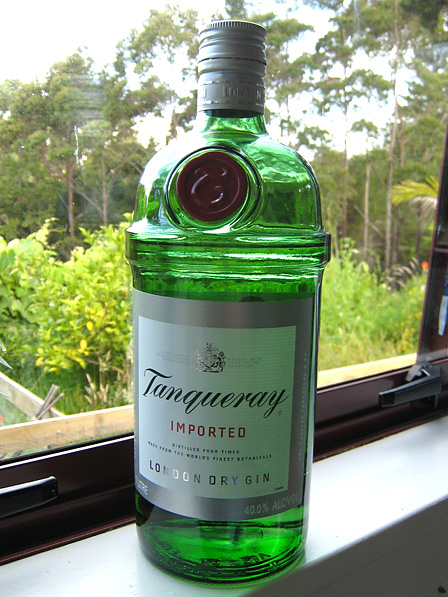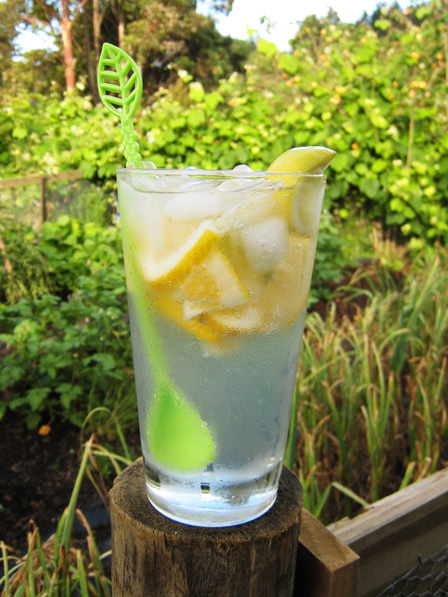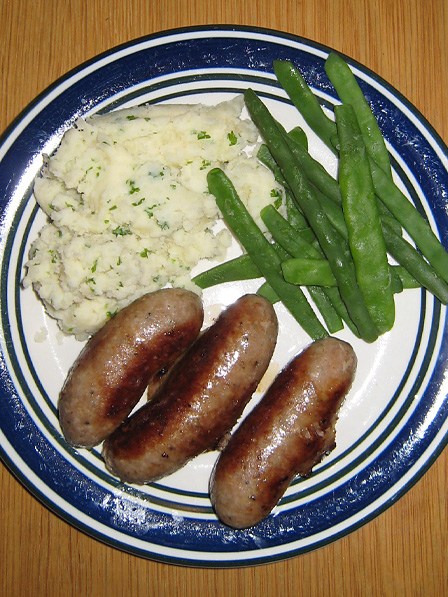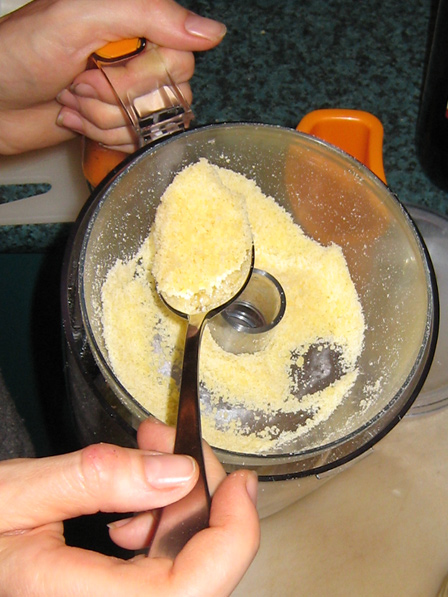On Christmas Eve, we had some showers earlier in the day and then a mild, almost fine, afternoon. After the weather cleared, while Becky attended to some business in the kitchen, I carried Owen on my back in the babypack and we toured around the farmlet, checking on the animals and generally enjoying our realm. Owen loves to visit the cows and “Moo” at them. It’s true. He sees the cows and lets out a gleeful, “MOOOOO!” as he points at them.
Now, it’s very easy to break a sweat in steamy Northland during the Summer months, and I’d done just that walking up, down and around the farmlet with Owen (~12KG) on my back. Luckily, the last time we were in town, I decided to stop by the liquor warehouse to see if any “Christmas Cheer” was on special; you know, something which might be useful for mixing up adult refreshing beverages. Would you believe me if told you that there was a big yellow “Special” tag on the large green Tanqueray bottle?
Spirits, especially nice ones, are too expensive for me to make much of a habit of, but the thought of a refreshing gin and tonic on a warm Summer afternoon quickly had me heading to the checkout counter with that iconic green bottle of quadruple distilled tipple.

Sadly, I don’t see us being able to produce anything like this on the Farmlet
I’ve rarely encountered a gin and tonic in a bar or restaurant that measured up to my weird standards for this particular drink. They’re usually made with way to much ice and not enough citrus. Additionally, regular highball glasses are too small for the job. Your taste will almost certainly vary, but I like a really good belt of gin and a strong citrus flavour, coupled with the bitter quinine finish of the tonic water. The pint glass is the way to go on this one.
Farmlet Gin and Tonic:
* Fill a pint glass half way with ice
* Slice about 1/3 of a lemon into thin rounds and squeeze over the ice (throw the skins in if you like)
* Slice half a lime into wedges and squeeze over the ice, run a lime wedge around the top of the glass (throw the skins in if you like)
* Pour gin, covering ice and citrus skins
* Top up with premium tonic water
* Stir well

Farmlet lemons and limes bathing in icy gin and tonic water
Wow, that’s a nice drink. It was so nice, in fact, that I had to try another that evening.
It’s hard to describe, but, somehow, these delicious cocktails seem to heighten the anticipation for the meal ahead. Becky was preparing some of our recently homekilled sausages—these with her herb fill—green beans from the garden, and spuddy mash.

Herb sausage dinner
Ahh, it was a very relaxing and enjoyable Christmas Eve.



